- +91 9428399374
- info@mybesttrip.in
Gujarat India
Longitude : 69.8597 E
Latitude : 23.7337 N
Website : https://www.mybesttrip.in/white-rann-resort-tour-packages/
Email : info@mybesttrip.in
Phone : 9428399374
A plethora of varied hues, profusion of design, superfluity of culture, cornucopia of music and dance, all together in the arid lands of Kutch creates a mosaic of exquisiteness which reflects the identity and spirit of the region. Kutch, one of the most ecologically and ethnically diverse district of the state is a celebratory land of art, crafts, music, dance, people and nature. During the full moon night of the winters amid the awe-inspiring and contrasting landscape each year a three day festive extravaganza brimming with hospitality, vigor and traditional flavor of the area is hosted and known as the Kutch or Rannutsav. This three to four day carnival organized at the various locales within Kutch takes one around the natural grandiose while introducing the visitor to the indigenous cultural and ethnical flavor of the people. Semi parched Grasslands of the Banni hosts the most magnificent display of vernacular architecture as the exhibition platform for the varied range of arts and crafts of the region. While an array of folk music and dance performances organized in the shimmering moonlit landscape provides the most enchanting experience. The colorful fairs held near the beach or the banks of a lake swings one with the spirit of festivity, fervor and flamboyancy while the organized tour around Kutch is an ideal occasion to be part of the region and experience the zeal and uniqueness of the people through a celebration of life!
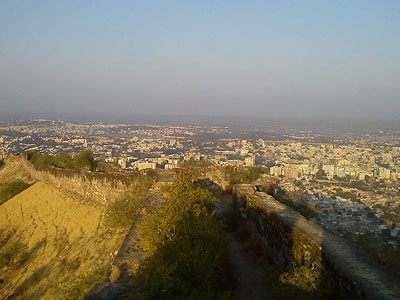
Bhuj is a city in the state of Gujarat, western India. It’s known for its centuries-old buildings, many of which were damaged in a 2001 earthquake. Close to Harmirsar Lake, the 18th-century Aina Mahal palace is elaborately decorated with chandeliers, mirrors and semi-precious stones. Nearby, the Italian Gothic–style Prag Mahal palace has a bell tower that overlooks the city, and a courtyard containing a Hindu temple.
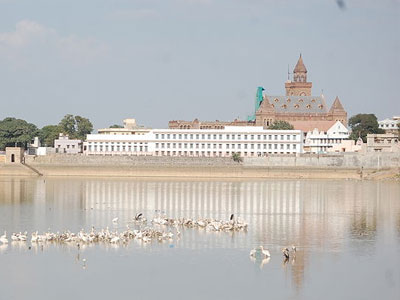
Hamirsar lake is a 450-year-old lake named after Jadeja ruler Rao Hamir (1472-1524), the founder of Bhuj.] The lake was built during the reign of Rao Khengarji I (1548–1585), the founder of Jadeja dynasty in Cutch, who named it after his father Rao Hamir. Rao Khengarji I chose this place as an oasis in saline and arid Kutch; and over several decades, developed canals and tunnels to bring together water from three river systems and recharge acquifier, to fulfill the needs of Bhuj, which was also declared as capital of his kingdom by him in 1549.Multitude of birds in Hamirsar lake The embankment of Lake Hamrisar was made during reign of Pragmalji II and further improvements done during early part of reign of Khengarji III under supervision of state Gaidher, Jairam Ruda Gajdhar. The embankment work was done by local mason community - the Mistris of Kutch.
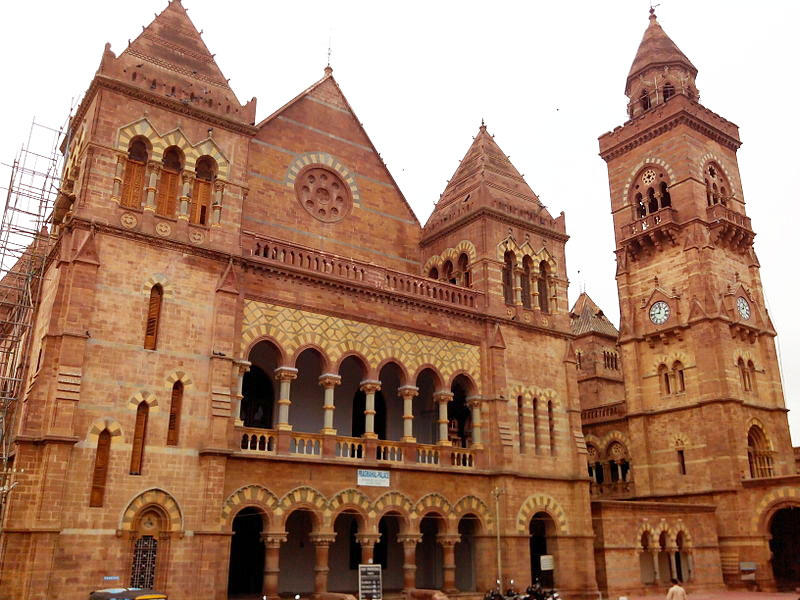
Prag Mahal is named after Rao Pragmalji II, who commissioned it and construction began in 1865. It was designed by Colonel Henry Saint Wilkins in the Italian Gothic style,[3] and many Italian artisans were involved in its construction. The palace artisans' wages were paid in gold coins. Construction of the palace, which ultimately cost 3.1 million rupees, was completed in 1879 during the regency of Khengarji III (Pragmalji II's son) following Pragmalji II's death in 1875. The local Kutchi builder community (Mistris of Kutch) were also involved in construction of Prag Mahal along with Colonel Wilkins.
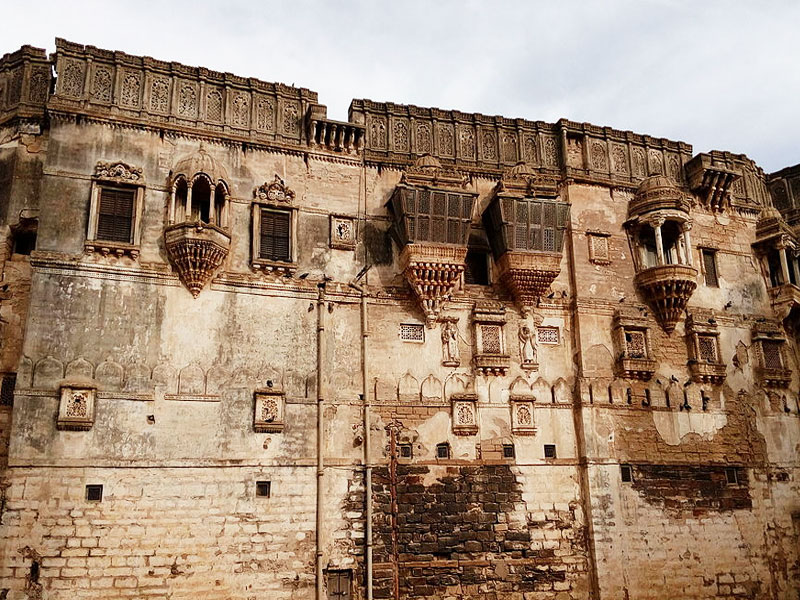
The Aina Mahal was built by Rao Lakhpatji (r. 1741–1760) in around 1750. The chief architect and designer of the palace was Ram Singh Malam, who lived in Europe for 18 years and mastered several European craft and architecture skills. The construction costed 80 lakh (8 million) koris or about ?20 lakh (2 million); equalling three years of the state revenue in that period. In 1830, Englishwoman Mrs Postnas visited the palace and noted her impressions in her memoir Cutch[B] (1839). She remarked on the "motley and incongruous mélange of ornament" in a room illuminated with large candles where she found six musical clocks playing at once among jelly glasses and old vases.
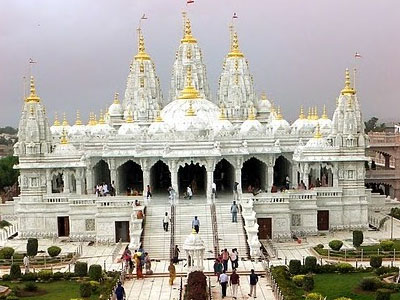
The Swaminarayan Temple of Bhuj is one of the most magnificent temples you will ever come across in this part of the country and one of the Best Place to Visit in Bhuj Since its first brick installation ceremony on 7 May 2003, it has taken 7 years for its completion.
Based on a grand podium, the new temple faces East and is constructed mainly with pure high quality marble. one of the best places to visit in kutch
Expanding a 35,000 sq. feet area, this Temple has 7 sky touching pinnacles. It consists of one central dome, 25 minor domes and 258 pillars. The peripheries, which are beautifully carved into the icy marble of Makrana and Ambaji, give it heavenly beauty, serenity and the divine approach to the temple.
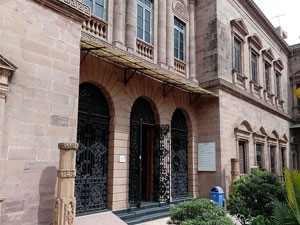
Kutch museum was initially formed as a part of the School of Arts established by Khengarji III, the Maharao of Kutch State. It was founded on 1 July 1877 The museum was earlier known as Fergusson Museum.
At the time of Maharao Khengarji III’s marriage on 19 February 1884 many new items were received and for exhibition of which, a need for new building was necessitated. As such, on 14 November 1884, the foundation stone for the present museum building was laid by the Governor of Bombay, Sir James Fergusson and named Fergusson Museum after him by Maharao of Cutch. The building consisting of two floors cost Rs. 320000 at that time.
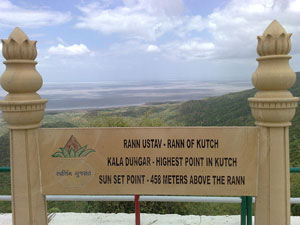
Kalo Dungar calling The Black Hills are 25 kms north of Khavda, the top of the Black Hills is the highest point in Kutch, at 462 m. From here, the entire northern horizon vanishes into the Great Rann, the desert and sky often becoming indistinguishable. It is one of the few non-coastal locations where you feel like you are at the edge of the earth, on the brink of incomprehensible vastness that fades off towards infinity. Looking out from the Black Hills, you can understand the tremendous effort that those who undertake the crossing of the Great Rann have to make. Since this is one of the places where a civilian can get closest to the Pakistan border, there is an Army post at the top; beyond here, only military personnel are allowed. The hill is also the site of a 400-year-old temple to Dattatreya, the three-headed incarnation of Lord Brahma, Lord Vishnu and Lord Shiva in the same body. Legend says that when Dattatreya walked on the earth, he stopped at the Black Hills and found a band of starving jackals. Being a god, he offered them his body to eat and as they ate, his body continually regenerated itself. Because of this, for the last four centuries, the priest at the temple has prepared a batch of prasad that is fed to the jackals after the evening aarti. Reaching the hilltop by public transport is difficult; the only bus travels there from Khavda on weekend evenings and returns in the early morning. Hiring a jeep from Khavda is your other option. Visiting in the early morning or late afternoon is recommended, though with a few more hours there are nice hikes to do around the hill. Be sure to take your own food and water and if you want to stay the night, there is a dharamshala next to the temple.
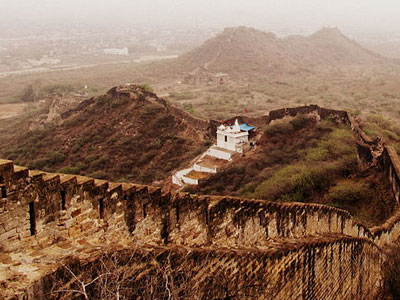
The first major battle at Bhujia Fort was fought during the early part of the reign of Deshalji I, when Sher Buland Khan, who was Mughal Viceroy of Gujarat at that time, invaded Kutch. The army of Kutch was in a precarious condition, when a group of Naga Bawas got the gate of Bhujia Fort opened through a stratagem on pretext of visiting Nag temple for worship and then joined in the fray against Sher Buland Khan's army, putting them to flight. Since that day Naga Bawa and their leader have had a place of importance in a procession held on Nag Panchami
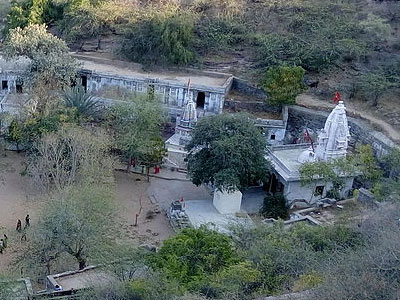
Tapkeshwari Temple is a Hindu temple dedicated to goddess Tapkeshwari situated in a valley surrounded by the hills. The Tapkeshwari hill range is situated south to the city of Bhuj
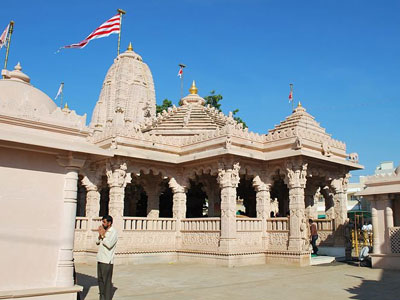
The temple was built in the 14th century by two Karad Vanias, Ajo and Anagor. They were the ministers in the court of the father of Lakho Phulani. The temple was damaged by the earthquake in 1819. The temple was rebuilt by Sundarji Shivji and Mehta Vallabhaji, two Brahmakshatriya in 1823 (Samvat 1880). The temple is 58 ft. long, 32 ft. wide and 52 ft. tall. Except that it has a passage for walking round the deity, it is much the same as the temple at Koteshwar. The temple was damaged again by the earthquake in 2001 but was repaired again.
The image of Ashapura Mata in the shrine is a red-painted stone, about six feet high and six feet broad at the base, narrowing to a point in a shape, with some rough likeness to a human form. It is said to have come from Jashod in Marwar. Here every year during the Navaratri, the Rao of Cutch used to offer a sacrifice of seven male buffaloes. The practice of animal sacrifice has been stopped
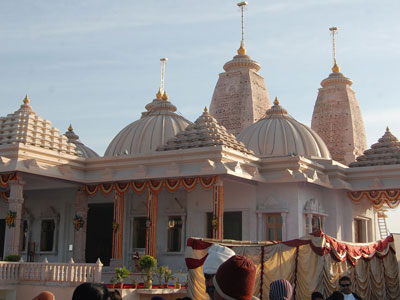
The Bhuj Trimandir is located 5 km away from the city of Bhuj (Kutch), behind Hill Garden, on the Airport Road. Bhuj Trimandir – Architecture The temple complex covers an area of 22,266 sq ft, while the temple podium is 8,412 sq ft. The Satsang Hall is on the ground floor of the temple and is 9,396 sq ft. Sharing equal reverence on the same platform, the idols of Gods of Jainism, Shaivism, and Vaishnavism (along with Gods and Goddesses from other religions) can be found within the temple. The idol of Lord Shree Simandhar Swami sits at the center, made entirely of marble and is 151 inches high.
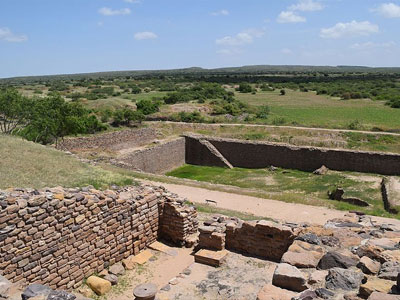
Estimated to be older than the port-city of Lothal, the city of Dholavira has a rectangular shape and organization, and is spread over 22 ha (54 acres). The area measures 771.1 m (2,530 ft) in length, and 616.85 m (2,023.8 ft) in width. Unlike Harappa and Mohenjo-daro, the city was constructed to a pre-existing geometrical plan consisting of three divisions – the citadel, the middle town, and the lower town. The acropolis and the middle town had been furnished with their own defence-work, gateways, built-up areas, street system, wells, and large open spaces. The acropolis is the most thoroughly fortified and complex area in the city, of which it appropriates the major portion of the southwestern zone. The towering "castle" stands is defended by double ramparts. Next to this stands a place called the 'bailey' where important officials lived. The city within the general fortifications accounts for 48 ha (120 acres). There are extensive structure-bearing areas which are outside yet integral to the fortified settlement. Beyond the walls, another settlement has been found. The most striking feature of the city is that all of its buildings, at least in their present state of preservation, are built of stone, whereas most other Harappan sites, including Harappa itself and Mohenjo-daro, are almost exclusively built of brick. Dholavira is flanked by two storm water channels; the Mansar in the north, and the Manhar in the south.
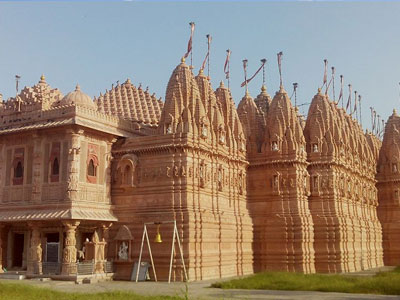
Bhadreshwar Jain Temple, also known as Vasai Jain Temple, is a Jain temple of historical importance located in Bhadreshwar village of Mundra Taluka, Kutch
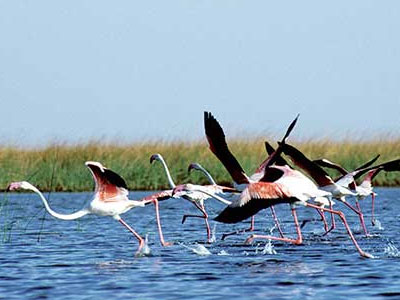
Gujarat India
Adalaj Stepwell or Rudabai Stepwell is a stepwell located in the village of
Gujarat India
Saurashtra peninsula is bound on the south and south-west by the Arabian sea, on the
Gujarat India
Near Rajpipla, 1163 km away up the river from the sea, is Sardar Sarovar dam. At the
Gujarat India
Many great cities of antiquity around the world were the center of their civilization
Gujarat India
Akshardham is majestic, intricately carved stone structure which stands amid sprawling
Gujarat India
The Aina Mahal palace, or “Hall of Mirrors” was built during the flamboyant
Gujarat India
Kalo Dungar calling The Black Hills are 25 kms north of Khavda, the top of the
Gujarat India
Lukshmi Villas Palace, an extravagant building of the Indo-Saracenic school, was built
Gujarat India
This famous temple of Kali Mata is one of the Shaktipeeths of the mother. Shaktipeeth
Gujarat India
The mosque was built in the last year of the existence of Gujarat Sultanate. The
Gujarat India
Vijaya Vilas Palace is the famous one time summer palace of Jadeja Maharao of Cutch
Gujarat India
Sabarmati Ashram (also known as Gandhi Ashram, Harijan Ashram, or Satyagraha Ashram) is
Gujarat India
Vanraj Chavda had founded A?ahilpur Patan in 802 CE as capital of his state. Capital
Gujarat India
Located on the route between Dwarka city and Beyt Dwarka Island on the coast of
Gujarat India
The story behind the 51 Shakti Peethas is rooted in Hindu mythology, specifically in